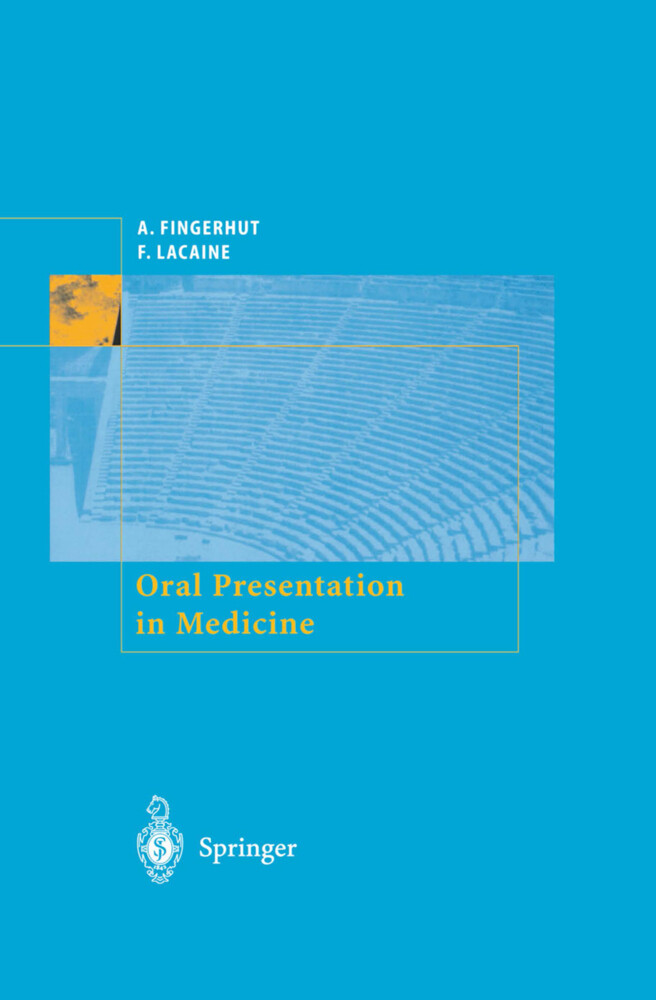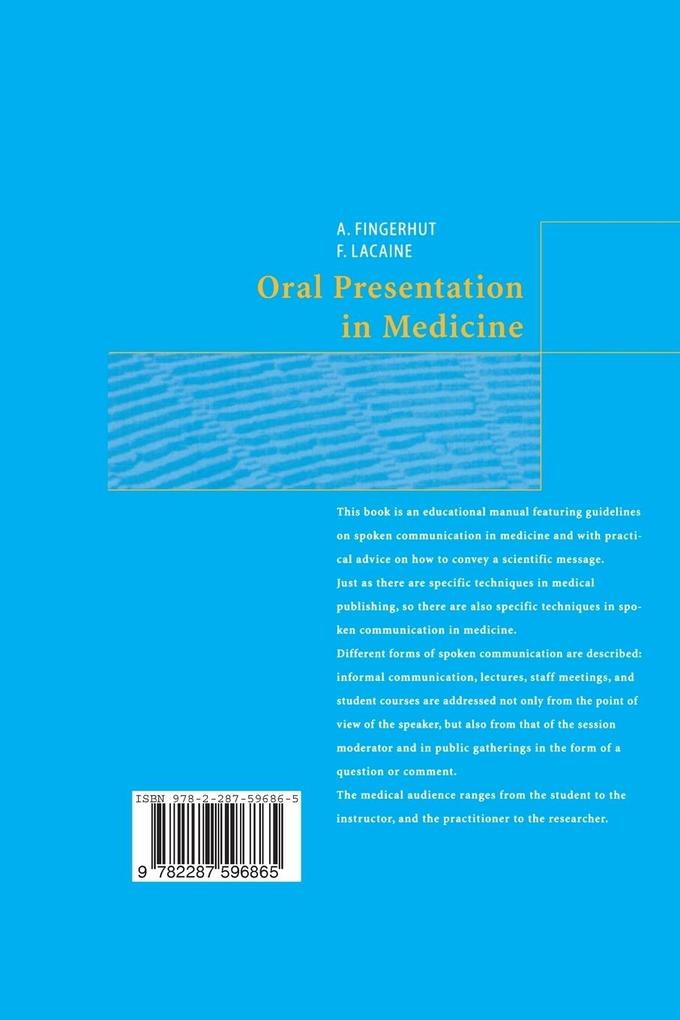
Zustellung: Di, 15.07. - Do, 17.07.
Versand in 2 Tagen
VersandkostenfreiBestellen & in Filiale abholen:
Scientific knowledge may be communicated in the written form or orally. Written communication (medical writing) usually takes the form of original or research papers, which appear in scientific journals. Oral communication in medicine is usually made during a meeting and is often called a free paper. Oral medical communication abides by certain rules. The objectives of this book are to examine and discuss these rules. Oral medical communication involves taking the floor to speak, whether it be as a speaker, the person who gives the talk in front of an audience, or as part of the audience, who can then ask questions or make comments. The go between is called the moderator. Some forms of oral communication are more specific to meetings with a large audience: free papers, panel discussions or roundtables, posters, and videos. Others are more characteristic of smaller audiences: hospital staff meet ings, or literature update sessions. Educational talks have a didactic goal and resemble a lecture, for instance, in a course, or are closer to a case report, when they are given during a small class get-together.
Inhaltsverzeichnis
Primary target audiences:
- The Speechgiver:
Role, posture, public presentation, exposé, oral expression, support materials, slides, posters, video and film, blackboard, or chart. Response to questions from the audience. Settings - informal communications, conferences, round tables, scientific posters, documentary, library, sessions.
- The moderator:
Role, Pre-Congress: text review, pre-exposé, presentation of the speaker and his/her subject during and after the exposé. Initiating, maintaining and concluding the discussion.
- The public:
Role-Taking the podium in responding to a question or comment.
- The Speechgiver:
Role, posture, public presentation, exposé, oral expression, support materials, slides, posters, video and film, blackboard, or chart. Response to questions from the audience. Settings - informal communications, conferences, round tables, scientific posters, documentary, library, sessions.
- The moderator:
Role, Pre-Congress: text review, pre-exposé, presentation of the speaker and his/her subject during and after the exposé. Initiating, maintaining and concluding the discussion.
- The public:
Role-Taking the podium in responding to a question or comment.
Produktdetails
Erscheinungsdatum
01. Februar 2002
Sprache
englisch
Auflage
2002
Seitenanzahl
80
Autor/Autorin
A. Fingerhut, F. Lacaine
Verlag/Hersteller
Produktart
kartoniert
Abbildungen
VII, 70 p.
Gewicht
137 g
Größe (L/B/H)
235/155/5 mm
ISBN
9782287596865
Entdecken Sie mehr
Pressestimmen
From the reviews:
"This book is an educational manual featuring guidelines on spoken communication in medicine, with particular advice on how to convey a scientific message ... . this text provides specific and really interesting techniques in medical publishing ... . The information contained in this volume can be of great importance to clinicians, researchers and also students who have an interest in the improvement of their communicative capabilities and possibilities." (M. Monticone, Minerva Medica, Vol. 96 (1), 2005)
"This book is an educational manual featuring guidelines on spoken communication in medicine, with particular advice on how to convey a scientific message ... . this text provides specific and really interesting techniques in medical publishing ... . The information contained in this volume can be of great importance to clinicians, researchers and also students who have an interest in the improvement of their communicative capabilities and possibilities." (M. Monticone, Minerva Medica, Vol. 96 (1), 2005)
Bewertungen
0 Bewertungen
Es wurden noch keine Bewertungen abgegeben. Schreiben Sie die erste Bewertung zu "Oral Presentation in Medicine" und helfen Sie damit anderen bei der Kaufentscheidung.










